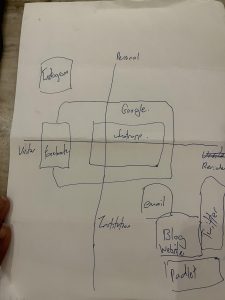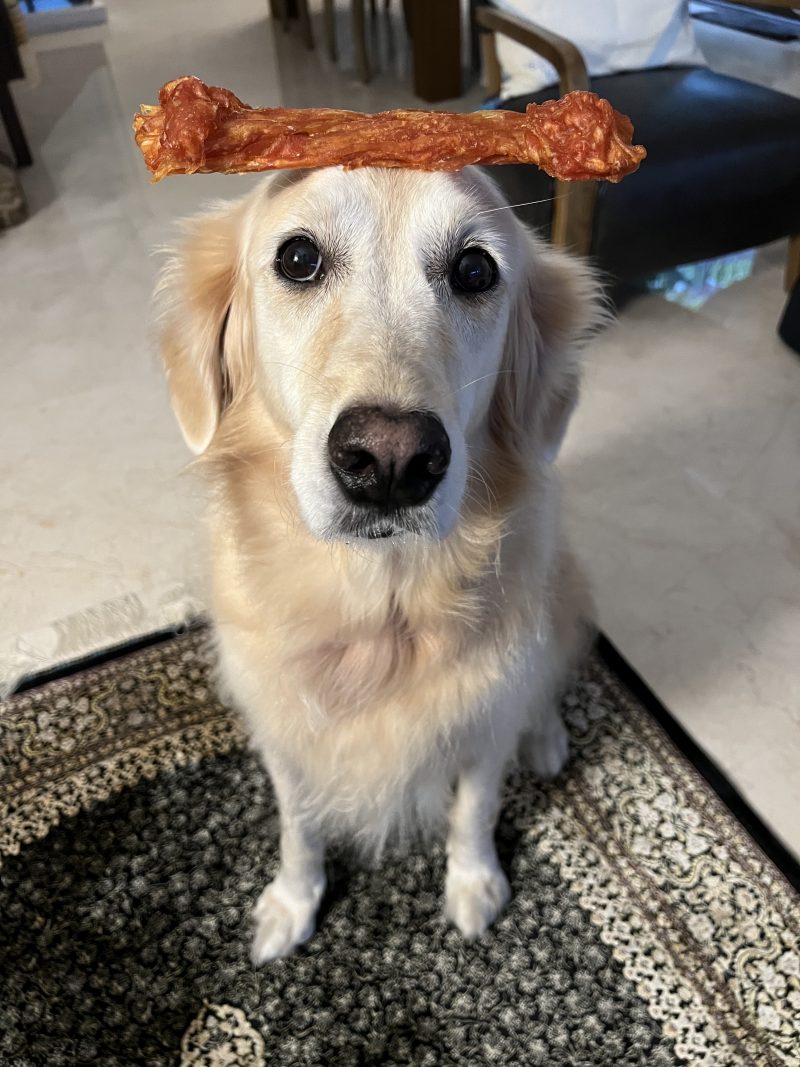This is a space for my reflections on topic 1. Today i looked at some videos on the ONL site. I watched a few by David White. I liked how he used the Visitor and Resident concept to look at online presence and engagement. I read a little about the concept of digital immigrants and natives.
I think that the 2 describe completely different things. I feel that the terms immigrants and natives separate people into 2 distinct groups. One group, born into the digital age and assumed to have digital literacies as a result, whilst the second (immigrants) entering a new world and having to learn a new culture. This may not always be applicable, and probably isn’t true a lot of the time. But maybe it does have a place for use in certain situations.
I prefer the concept visitors and residents, as described by David White. I think this is an excellent way to look at one’s position or even one’s organisations position in the digital world. Here is my map below.

My map probably looked quite different many years ago. I like the fact that this is something fluid, that changes over time, in line with how my life and work change. A few years ago, many of the components in the map such as the blog, website, twitter and padlet would not have featured in the map. I only became active on twitter at the begining of 2022. I use it mainly as an educational network, to learn and discover more about a very specific topic that i am interested in. I have actually made a few professional connections on twitter with people that share my interest. My website, pocus.sg was also recently launched and i am looking to use this platform for education in the topic of my interest.
David White made a comment about email being more of a visitor component. I placed it in the resident area of my map as i believe that email is one of the main ways that communication occurs in my organization. I do read emails, and i do respond to those that require my input.
How useful is a visitor resident map ? Personally, drawing out the map showed me where i spend a lot of time, and also showed me areas where i could put to better use perhaps. I think the real value of these maps lies in the ability to communicate ones presence in the digital world to others. If i knew that a colleague spent a lot of time on twitter and rarely used facebook, then i would know how best to communicate with this person. I often find in work that emails go unanswered, even whatsapp mesages. Maybe if everyone in an organisation had a digital visitor resident map, it could facillitate communications and collaborations.
I think ONL 222 has been impressive so far. I like how they have split a large number of participants into smaller groups to facillitate discussion. Other aspects that are enjoyable are the freedom to explore various methods or tools for asynchronous online collaboration and presentations. Having an online space to post messages, both within the group and to the whole community is also excellent.
Now i will discuss the problems that i face on my website. It is still in its infancy, so maybe these things take time to develop. I have been trying to create an online space for students that i teach, so they can better interact and collaborate online. One of the key aims is to get students to discuss answers to questions online. So far, it has been quite difficult to accomplish this. The invited students use the website as visitors. My issue is how do i transform their roles to residents. Perhaps i will learn more about how to accomplish this on ONL222.
Topic 1 is about digital literacies and participation. We were given a scenario about a person who has just signed up for an online course, who appears to be excited on the one hand but also has some fears relating to what is expected of her. This person appears concerned about her abilities in the digital world, and worries that her peers will know better.
In our group, we have discussed a few points. A big part of the discussion focused on digital tools and how lack of familiarity could lead to anxiety, lack of engagement and frustration with the online course. Other important aspects to consider include individual circumstances of participants. These cover cultural aspects and personal aspects which may impact on how a participant engages with online courses. Geographical issues and infrastructure issues will have bearing on online course accesibility.
To summarize my views on how to facillitate digital participation and literacies. (A few best practices maybe)
- Keep it simple – Use simple digital tools where possible.
- Have onboarding sessions before the course starts to familiarise everyone.
- Create a safe and friendly environment where students and teachers can engage online. – Use other communication tools such as whatsapp group chats, microsoft teams or discord.
- Use of online forums to discuss key points covered in the course.
- Reminders via email or other means.
- Easy to manage deadlines that do not interfere with personal time.
- Use small group sesssions with regular meetings to facillitate discussion. Group work with presentation of findings to the whole class.
- Personal reflection space for each topic covered.
- Channels for personal (one on one) contact with course facillitators should be available.
References:
- Visitor and Residents – Parts 1 & 2 by David White
- The essential elements of digital literacies – Doug Belshaw





2 Comments
Add Yours →Dear Suresh,
Thank you for your summary of your views on digital literacy and using tools. It is a great help to have some guiding principles so that we can proceed judiciously and efficiently as we move from being visitor to resident in the digital realm.
Best regards
Yooke Sim
Thanks Yoke Sim. Nice to e-meet you.